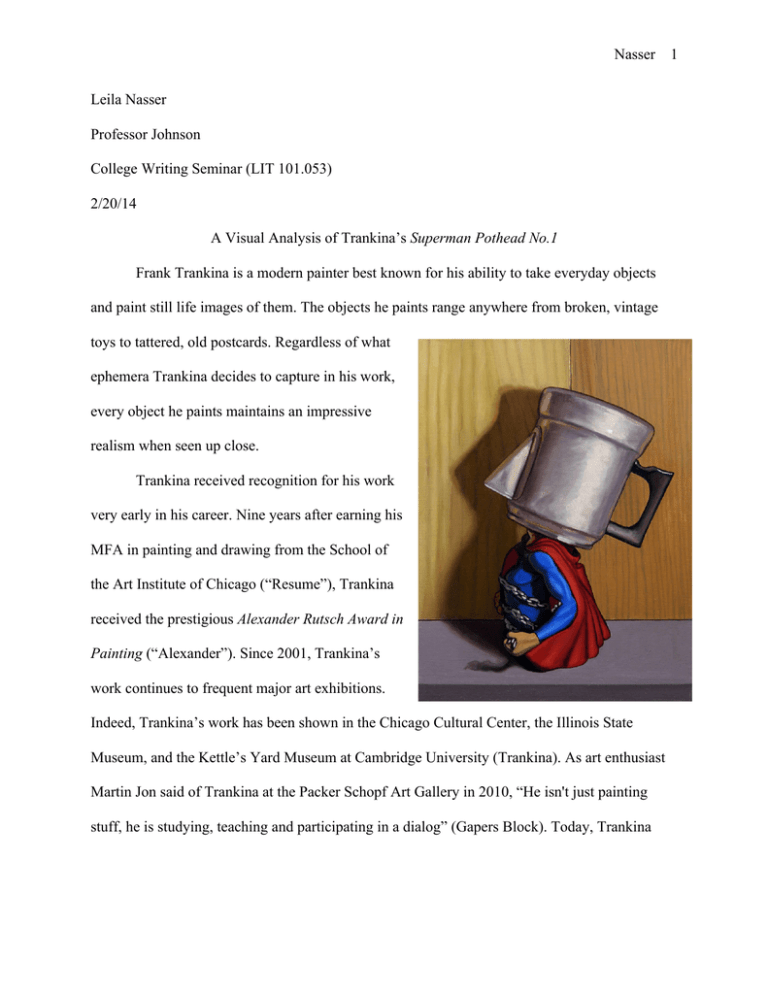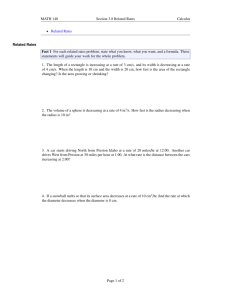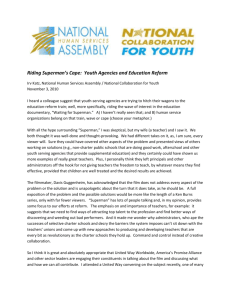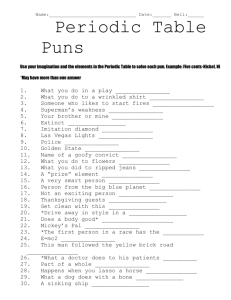Nasser 1 Leila Nasser Professor Johnson College Writing Seminar (LIT 101.053)
advertisement

Nasser 1 Leila Nasser Professor Johnson College Writing Seminar (LIT 101.053) 2/20/14 A Visual Analysis of Trankina’s Superman Pothead No.1 Frank Trankina is a modern painter best known for his ability to take everyday objects and paint still life images of them. The objects he paints range anywhere from broken, vintage toys to tattered, old postcards. Regardless of what ephemera Trankina decides to capture in his work, every object he paints maintains an impressive realism when seen up close. Trankina received recognition for his work very early in his career. Nine years after earning his MFA in painting and drawing from the School of the Art Institute of Chicago (“Resume”), Trankina received the prestigious Alexander Rutsch Award in Painting (“Alexander”). Since 2001, Trankina’s work continues to frequent major art exhibitions. Indeed, Trankina’s work has been shown in the Chicago Cultural Center, the Illinois State Museum, and the Kettle’s Yard Museum at Cambridge University (Trankina). As art enthusiast Martin Jon said of Trankina at the Packer Schopf Art Gallery in 2010, “He isn't just painting stuff, he is studying, teaching and participating in a dialog” (Gapers Block). Today, Trankina Nasser 2 lives and works in Chicago and teaches at Northern Illinois University as an associate professor (Trankina). This painting, entitled Superhero Pothead No. 1, is part of a three-piece collection from the Sightline Exhibition, currently on display in the American University Museum at the Katzen Arts Center. Tim Doud, AU faculty member and curator, structured the show around artists like Trankina whose work he believes will have a long-lasting impact, and will expand viewers’ line of sight (“Sightlines”). Trankina painted Superhero Pothead No. 1 in early 2013. Like most of his work, the painting is brightly colored, simple, and lifelike, a style commensurate with the works of still life painters Giorgio de Chirico and John Peto (Trankina). Like de Chirico and Peto, Trankina employs trompe l’oeil, an art technique that uses realistic imagery to create an optical illusion that depicts objects in three dimensions (Esaak). The application of this technique is well perceived in Superhero Pothead No.1, where we see a lifelike image of Superman with a shiny pot on his head and thick, bulky chains shackling his muscular torso. Behind Superman, two wood panels, which pick up every nuance of light and gradation of color, serve as his backdrop. Based on the painting’s composition and Trankina’s use of light, contrast, shape, and size, the intent of Trankina’s Superhero Pothead No.1 is to criticize the idolatry of pop culture phenomena. Trankina’s use of light and contrast provide a profound sense of veneration for the painting’s main subject. From the bottom right corner of the piece, light, stemming from an unknown source, illuminates Superman and part of the backdrop behind him. Because of the light, we see Superman’s impressive physique: his well-defined muscles, his broad shoulders, his raised chest. Trankina also uses contrast as a method of lionizing this pop cultural icon. Nasser 3 Superman’s vibrant red cape and electrifying blue costume for example, contrast sharply with the humdrum, tawny wood panels behind him. As with the carefully directed spotlight, these colors “pull” Superman from the painting and make him appear indomitable. The irony of the painting then, is the pot. At first glance, it seems rather silly that Trankina would paint Superman in this manner, because in magazines and books, he is never painted as such. But in this painting, the pot challenges Superman for attention. Its aluminum body shines wildly in the light and casts a large shadow on the wood panel. Most importantly, however, is the placement of the pot, mounted on Superman’s head. Its position evokes the term “pothead,” a term that defines many of the athletes and celebrities that we today perceive as our role models. Conventionally, a “pot” is used as a utensil, a helpful tool, a container for holding water, growing herbs, cooking food, etc. In this painting, however, Trankina relies on the second denotation of the word “pot,” or more formally marijuana. As the size of the pot relative to Superman illustrates, “pot” has a large presence in the context of pop culture. Now more than ever, or so it seems, the word “pothead” is linked to an increasing number of pop culture icons and pro athletes with whom young adults identify. I for one was shocked when I heard Michael Phelps was caught smoking marijuana in 2009. Phelps is the most decorated Olympian of all time, and the breadth of his influence on younger audiences is massive. He was (and is, in many people’s opinion) a modern “Superman” of sorts. It is thus disappointing to see his name linked to “pothead,” as are many others: Miley Cyrus, Randy Moss, Kristen Stewart, the list goes on and on. The painting also suggests that idols dubbed as potheads must live, to some degree, in shame. Indeed, it is not just Superman’s eyes and face that are covered; it is his entire head. The Nasser 4 pot thus serves as a mask, a mask hiding Superman’s true identity. A part of me wishes I could just yank that silly pot off Superman’s head and expose pop cultural celebrities for what they really are, instead of what they pretend to be. In Superman’s case, I wonder what I would find under that pot. A face with flushed cheeks, with drops of sweat building at the forehead? An implied look of guilt, of humiliation? Trankina does not want us to know. Instead, Trankina chooses to focus on Superman’s impressive physique, something Superman, and undoubtedly most pop culture icons, would prefer to be remembered by in any case. Interestingly, the subtle shape of the pot can also be interpreted as a criticism of today’s idolatry of supposed role models. If the snout of the pot was erased, for example, the pot would resemble a beer mug, suggesting to viewers that marijuana is not the only substance our real-life superheroes abuse. Also noteworthy is the shape the right side of the pot makes with its geometric handle, the distinct letter “D,” which could easily stand for “dope” or “drugs.” The glorification and respect we have for pop culture “potheads” can furthermore be gleaned from Superman’s stance. We can assume what with his burly chest raised high and his arms at the ready, that Superman is ready to takeoff; that he is ready to rid the streets of evil. Two things, however, prevent Superman from taking flight, one of which is the absence of a lower body. Without legs or feet, Superman cannot possibly leave the ground, and perhaps deservingly so. It is as if Trankina wants to visually show us that Superman, and our real-life superheroes by extension, is only half the man he says he is. A second stymie that prevents Superman’s flight is the thick, bulky chains that enmesh him. Interestingly, Trankina does not show his viewers what Superman is chained to. In fact, Superman appears to be chained to himself, as if he is the reason he cannot take flight, as if he is his own villain. And, based off the tightly clenched fist that holds the chains, Superman is not Nasser 5 happy with this fact. Thus, the painting conveys the message that, though pop culture icons want to be indomitable and indestructible, they still suffer from flaws. It is just unfortunate that veneration blinds us from seeing them. Trankina’s painting succeeds in depicting our blind infatuation with pop cultural icons. As the use of light and contrast demonstrate in his work, many people glorify their idols despite the poor choices they make and inappropriate messages they send to fans. Indeed, the size of the pot relative to Superman shows just how much of this negativity exists in the pop culture world. The depiction of Superman and the shape of the pot also serve to highlight the struggle (or refusal) of today’s role models to reveal their true identity and living with consequences of that decision. Trankina’s detailed painting of Superman shows us that we choose to venerate our reallife superheroes even though we should not. Perhaps this painting serves a challenge, a challenge that involves being our own heroes, and learning to “save the day” without Superman’s help. Nasser 6 Works Cited "Alexander Rutsch Award." Alexander Rutsch. The Estate of Alexander Rutsch, 2008. Web. 14 Feb. 2014. Esaak, Shelley. "Trompe L'Oeil." About.com. 2014. Web. 16 Feb. 2014. Jon, Martin. "Frank Trankina at Packer Schopf." Gapers Block. 17 Sept. 2010. Web. 24 Feb. 2014. "Resume." Frank Trankina. 2013. Web. 15 Feb. 2014. "Sightlines: Ann Pibal, Jill Downen, Frank Trankina, & Dean Smith." American University. 2013. Web. 12 Feb. 2014. Trankina, Frank. Superman Pothead No.1. 2013. Oil on linen. The American University Museum, Washington, D.C.




